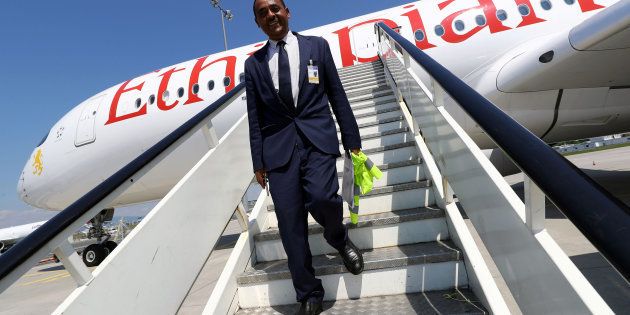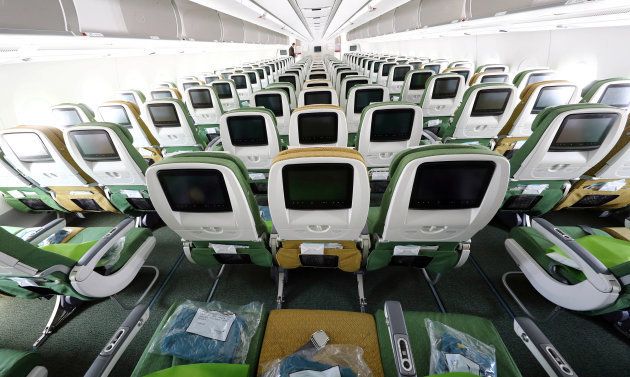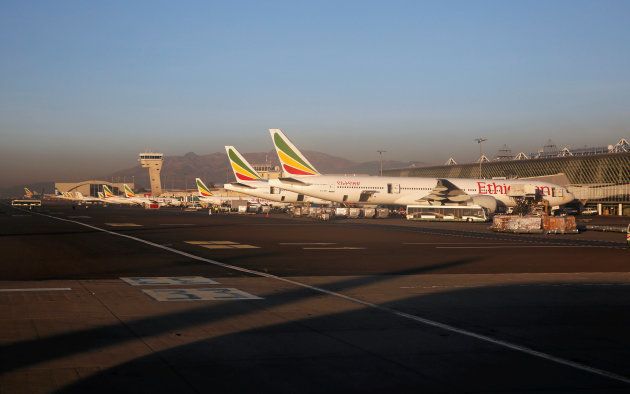
COMMENT & ANALYSIS
Ethiopian Airlines on Tuesday announced the east African carrier has fully digitised its operations, removing paper from its entire system as it moves into the 'fourth industrial revolution'.
Along with the airline's paper trail, Ethiopian is progressively disposing of its biggest African counterpart -- South African Airways -- into the dustbin of aviation history.
The diverging fortunes of the two African giants in recent years is a sombre tale for the South African observer: the east African carrier, humbly built from the ground up over decades, today cruises steadily above the (avoidable) South African wreckage below.
Ethiopian Airlines' latest annual report for 2015/6 revealed it reached record profitability despite deflation of African currencies putting a slight damper on its margins. In the year leading to June 2016, it raked in a staggering 6.12 billion Birr (approximately R4.08 billion*), almost doubling its profits from the year before.
Meanwhile, over at South African Airways, commercial viability had by then already become somewhat of an urban legend. In its 2015/6 year, by comparison, it posted a loss of R1.5 billion which its then-acting chief executive called "pleasing" given the R5.6 billion loss the year before. By 2016/7, any illusion of recovery had fully dissipated, and the tragicomedy reached even greater heights, bailout by bailout and scandal by scandal.
How then, have our not-so-nearby African neighbours soared while SAA -- a formidable South African flop -- sinks further into shame?
In a 2016 interview with Greg Mills for Daily Maverick, the airline's group CEO Tewolde Gebremariam gave SAA a few clues on how to build a winning airline, even during turbulent times:
Ethiopian Airlines' first pillar, he said, was affordability on sustainability. Remaining creditworthy was paramount as the airline has "no other means of funding growth" and "doesn't get a cent from government".
Ethiopian Airlines is a 100 percent government-owned organization, but ownership and management of the airline are completely separate.Tewolde Gebremariam
Some of the other key dimensions to the airlines success, he has revealed in a range of interviews, are as follows:
- A clear long-term vision for the airline which must come from government and policymakers: "The government has to answer the question about whether it sees the airline as a strategic asset or simply business". The airline's Vision 2025 aims to realise USD $10 billion in revenue, USD $1 billion in profit and flights to 120 international and 26 domestic destinations by that year.
- Frugality and adjusting the airline's operating model in accordance with its available funds: Unlike SAA, for example, Ethiopian has not adopted a huge 'discount' model for government departments or corporate clients: "You can't be as lavish as South African Airways and expect to survive".
- Strict principles of non-interference from politicians: the first time a top army official attempted to interfere in the airline, he was "publicly executed** as a deterrence to others who might dream of eroding the independence of the airline" (an otherwise unconfirmed claim reported by This Day). According to Gebremariam in an interview with Skift, "Ethiopian Airlines is a 100 percent government-owned organization, but ownership and management of the airline are completely separate".
- Aggressive investment in infrastructure, skills development, backward-and-forward industry linkages: The airline trains 4,000 students at a time, possess the largest cargo terminal in Africa.
- Hiring professional management staff based on merit rather than motivated by patronage and cronyism: Ethiopian Airlines' management team had over 421 years of airline industry experience between them, according to former researcher at the Helen Suzman Foundation, Andrew Barlow.

There are, still, exogenous factors beyond both airlines' immediate control that can be beneficial or threatening. For Ethiopia, its geography undoubtedly gives the airline a considerable strategic and competitive advantage to build a "multi-hub" network, whereas South Africa doesn't share the same unearned advantage. At the same time, dominant players including Emirates, Etihad and Qatar Airways are merely across the pond and, no doubt, are a constant worry for Ethiopia's long-term planners.
Factors beyond the airlines' control aside, Ethiopian Airlines' is a winner because it is first and foremost a competitive business rather than a politically distorted, bloated and endlessly controversial entity.
Where Ethiopian has long-term vision and short-term strategy, SAA can barely see a month into the future. Where Ethiopian is extremely strict about affordability and sustainability, SAA has become accustomed to running to the state like a spoilt child who keeps blowing their pocket money.
While Ethiopian has engendered a commitment to "national duty", according to Gebremariam, SAA evokes only national shame given the scarcity of resources spent propping up a shoddy operation that could be better spent on functional developmental expenditure.

Where Ethiopian has developed considerably strict and reliable internal controls, SAA's inner machinations are hard to discern and raise red flags. The 2015 Ernst & Young forensic investigation into 48 tenders at SAA, for example, reported severe problems or irregularities with more than half these deals. As recently argued by Simon Mantell, the evidence suggests SAA suffers from "systemic weakness in internal control" that lend to wasteful and irregular expenditure.
If there is a crucial lesson (among the many, many lessons) for SAA in Ethiopian's long-term success story, it is surely this: when the piggy bank is empty, it's empty, and there's no way around it other than to change your strategy.
*In 2016 value: Conversion rate of 1 ETB = 0.66600 ZAR on 01/06/2016
** To be clear, this is not an endorsement of this extreme, inhumane method of punishment.
